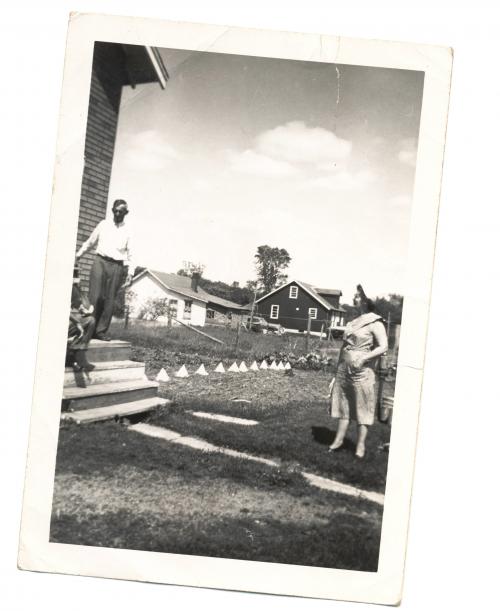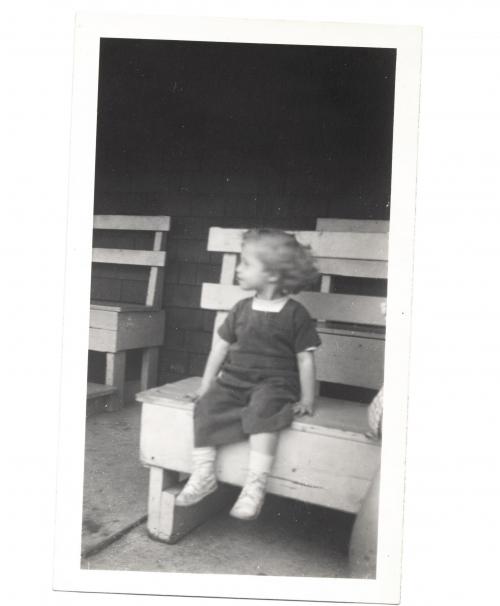The End.
Understanding Gained. Differences Today. The Horse. Disease. Thank You.
After nearly 7 years, almost 2,500 posts, over 350 photos, I have decided to end publication of Dakota Death Trip. This has been a fun project which has stretched well beyond the expected year I had originally established as a deadline and has gained a variety of followers across the United States, particularly via the site's Facebook page. I feel I have accomplished all I can, and despite ever growing archives of digitized newspapers, this decision isn't for lack of content to choose from. I am not sure what comes next for me, but I've always got ideas on the back burner.
I knew from the start that I would discover that mankind, ultimately, hasn't changed in the past hundred years, let alone centuries. People look at the violence, insecurity, depression, and conflict of today and long for the "Good Ol Days", because as a defense mechanism our memory of unpleasant and horrifying things is mercifully short. The newspapers of old are a testament to that short memory: a paper comes out today, and it will be replaced by another tomorrow, and there's no inherent need to retain what was in yesterday's paper unless it's personally important to you. The historians' job is to retain that information; the person on the street's job is to learn, and move on.
So, today as it always was, jealous lovers kill both their rivals and the objects of their desires; criminals use bullets and blades to punctuate their crimes; random accidents burn, and cut, and crush, with no apparent blame to be placed; drink and drugs harm the abuser and those around them; misplaced anger lashes out at loved ones with devastating results; despair and anxiety lead those to end their own suffering.
Dealing with those aspects of life was harder back in the Good Ol Days: a hospital was many hours away, infection and disease were still weakly understood and treatments not always successful nor beneficial; safety devices were an afterthought; guns were an everyday tool. It was less safe then — not because of people, but because of the world around them.
The most striking thing I learned about the Good Ol Days is a cultural change which I don't think gets enough attention. The time period I focused on, the 1880s through 1920s, saw one huge change: the replacement of horses with gasoline engines, both in industry and transportation. The telephone was a slow burn, radio and television replaced existing media with convenience but not a significant change, electricity brought new abilities to the home, but the loss of the horse changed life significantly. Before the car, the horse was a fixture of life on the plains — it was access to community, it was the 'engine' of the farmer, and life revolved around caring for these animals which so much depended on. The horse was autonomous transportation: you could put a five-year-old on a horse-drawn wagon and point the horse home, and reasonably expect him to make it. If a rider was expected home, but only the horse arrived, something was wrong. Many drunks met their end, not from the horse itself, but from trusting they could stay on their wagon while the horse led him home. Towns had stables and infrastructure to take care of horses, every farm had to handle their own herd, veterinarians focused on keeping these animals alive vs the dog-and-cat service that leads their industry today.
The horse, for all its benefits, wasn't the perfect machine — unlike a car, a horse having a bad day could get you a kick in the head, or knocked off while riding, and the dependence on the horse to be a smart and knowledgeable animal, but also follow directions without resistance, creates conflict. That trust in horses allowed farmers to put pre-teens onto horse-drawn farm implements, knowing the horse knows what to do, but resulting in spooked horses leaving an injured child lying in the dirt, having fallen into the equipment. The gasoline engine provided more power, more reliability, and required less maintenance, making it an obvious change to have occurred, but its impact on how a farmer's life was led was a drastic change for the time.
Another common topic of newspapers of the period in question puts into perspective just how new modern medicine is. In a time with airplanes, automobiles, movies and telephones, entire families were being wiped out, neighborhoods were dying faster than they could be buried, due to relatively simple infections. It wasn't just the devastating Spanish Flu; scarlet fever, pneumonia, tuberculosis all were relatively unhindered in their taking of human lives. General public cleanliness, new in the last half of the 19th century, contributed to a significant cut in the spread of disease, but once a disease took hold it was largely up to the human immune system to get through it. Once one member of the family caught it, the disease spread to everyone else, particularly affecting the young and old and infirmed. Immunizations and antibiotics have had a drastic impact on society today — life expectancy has essentially doubled, due to a combination of less death of children and the longer survival of the elderly, both of whom struggled with infections that barely register today. The fear of returning to this, both due to anti-vaccination nonsense and antibiotic-resistant bacteria, is due to the clear impact medicine has had today: it doesn't take rigorous scientific studies, it takes a look at the "locals" section of any small newspaper to see issue after issue documenting deaths from basic diseases, one after the other. The idea of scanning the obituaries and seeing nothing but the elderly dying of old age, is a truly ultra-modern condition.
Many thanks to those who helped spread Dakota Death Trip over the years: Patrick Springer of the Forum for his article that really brought it to the public's attention, Bob Harris of KFGO for many conversations over the years, Troy Larson of Ghosts of North Dakota for his support and providing a place for me to link to for so many lost towns that were once so prominent in the newspaper. And, of course, to the readers who shared links on Facebook and elsewhere to individual stories and the weekly updates, which is the main way that people learned about the website.
Permalink










